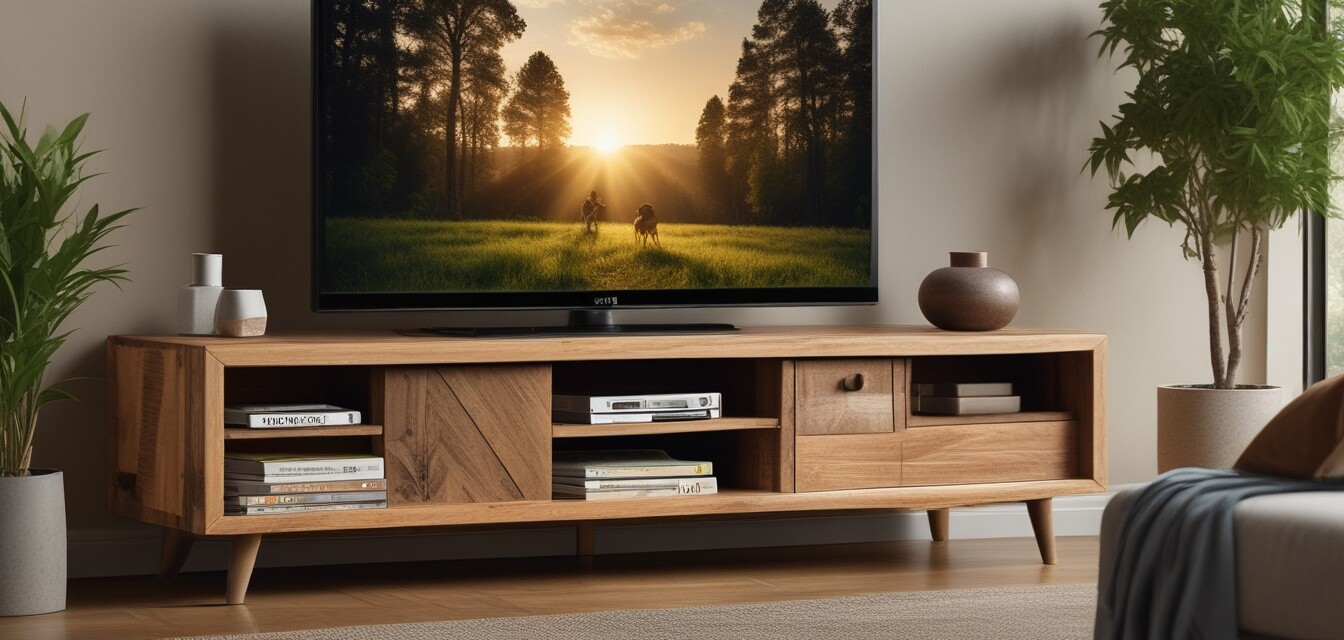
Exploring the link between culture and sustainable design
Key Takeaways
- Cultural influences significantly shape sustainable furniture design trends.
- Materials and craftsmanship play a crucial role in connecting sustainability with culture.
- Consumers are increasingly favored eco-friendly options that reflect their cultural identity.
- Innovative designs are emerging that blend decorative aesthetics with sustainable practices.
- Understanding these trends can help consumers make informed choices about their furniture purchases.
In recent years, there has been a notable shift in how consumers view furniture design, particularly regarding sustainability. As culture influences various aspects of living, it also plays a pivotal role in shaping sustainable furniture designs, especially TV stands. This article delves into the intricate links between culture and sustainable design, showcasing how traditional practices and contemporary needs intersect to create unique furniture solutions.
The cultural impact on sustainable furniture design
Design is inherently a reflection of the society in which it exists. When it comes to sustainable furniture, this principle holds especially true. Here are some ways that cultural influences impact sustainable design trends:
- Traditional craftsmanship: Many cultures boast unique craftsmanship techniques, which are increasingly popular in sustainable furniture design. By utilizing traditional methods, designers promote heritage and reduce environmental impact.
- Material selection: Cultural preference plays a significant role in what materials are deemed appropriate for furniture creation. Many cultures prioritize sustainable materials that are locally sourced, contributing to local economies.
- Design aesthetics: Cultural influences introduce distinct design aesthetics that shape the appeal of sustainable furniture. Patterns, colors, and forms can be reflective of cultural identity.
Emerging trends in sustainable furniture design
The fusion of culture and sustainability has led to several emerging trends in furniture design, particularly for TV stands. Let's explore these trends in more detail:
| Trend | Description | Examples |
|---|---|---|
| Upcycling | The practice of reusing materials to create new furniture pieces. | Old wooden pallets turned into stylish TV stands. |
| Biophilic design | Incorporating natural elements and greenery into furniture design. | Stands featuring integrated planter boxes for aesthetics. |
| Modular designs | Flexible pieces that can be adapted to different spaces and needs. | Customizable TV stands that grow with the family. |
| Ethical sourcing | Choosing materials that are sustainably sourced and produced. | Furniture made from responsibly harvested wood. |
As these trends evolve, they influence consumer’s preferences and purchasing decisions in the realm of sustainable furniture.
Consumer behavior and cultural influences
Today's consumers are increasingly aware of the cultural implications of their choices. As awareness of environmental issues rises, many people gravitate toward products that reflect their values and cultural background. Some ways this is manifested in consumer behavior include:
- Pride in heritage: Consumers often prefer furniture that reflects their cultural identity, opting for designs reminiscent of their roots.
- Community engagement: Shopping locally or supporting businesses that prioritize cultural significance and sustainable practices.
- Social considerations: An emphasis on how purchased items fit within broader social issues has led consumers to seek eco-friendly alternatives.
Innovative design examples
Global designers are utilizing cultural influences in innovative ways to create sustainable TV stands that meet modern needs. Here are a few examples:
| Design Element | Origin | Eco-Friendly Material |
|---|---|---|
| Japanese Minimalism | Japan | Bamboo and reclaimed wood |
| Scandinavian Functionality | Scandinavia | FSC-certified plywood |
| African Textiles | Africa | Upcycled fabrics and fibers |
| Indigenous Artistry | Various Indigenous cultures | Locally sourced timber |
The future of sustainable design
As cultural influences continue to shape the design landscape, we can expect the trend of marrying sustainability with culture to grow further. Emerging technologies, coupled with traditional practices, will pave the way for innovative designs that prioritize eco-consciousness while celebrating cultural identity.
For consumers looking to stay updated on the latest sustainable furniture trends, our News and Trends section will provide continuous insights and ideas.
Pros
- Promotes cultural appreciation through design.
- Encourages sustainable practices in furniture production.
- Offers unique and customized furniture options.
Cons
- Sometimes higher costs associated with sustainable materials.
- Availability of eco-friendly options may vary by location.
Conclusion
The connection between culture and sustainable design offers a rich tapestry of opportunities for both consumers and designers. As society continues to embrace sustainability, understanding the cultural elements that influence furniture design will not only lead to informed purchasing decisions but also foster a deeper appreciation for the artistry involved in creating furniture that is kind to our planet.
For more insights on eco-friendly furniture trends, check out our guides on Buying Guides or explore our category on Corner TV Stands for sustainable options!